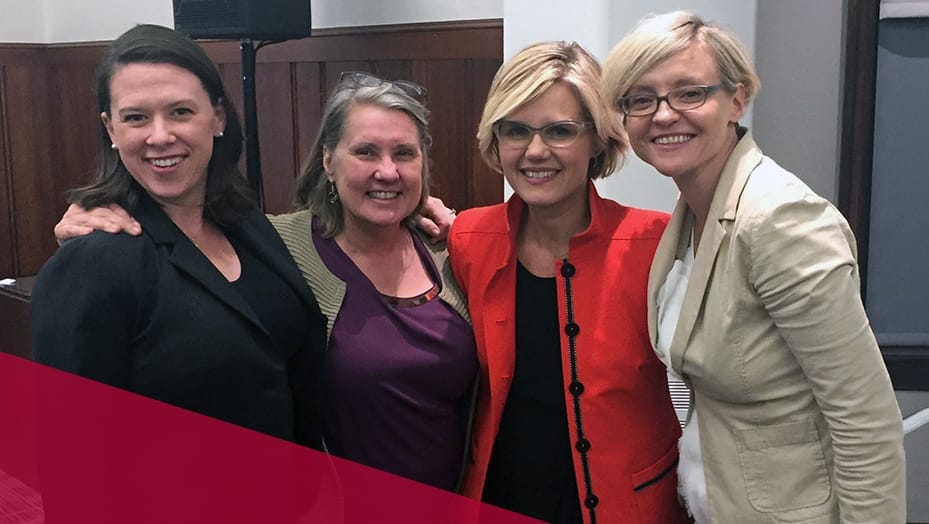Consideration of impact in investing not only infuses social issues with much-needed sustainable capital, but also makes for more prudent investors who better recognize risks and opportunities. Given the rising need for private sector intervention in solving public sector issues, we believe there is much to be done at the intersection of society and business.
And we are not alone: impact investing is gaining significant traction with investors, from millennials to ultra-high net worth family offices, and the financial services industry is taking action to meet such demands. Equally exciting related fields—such as gender lens investing—are rising in popularity as well.
This summer, WSII was pleased to host two thought leaders on Penn’s campus to talk about what they’re seeing in this exciting space.
We encourage you to watch the full interviews, but if you’re in a pinch (or in a meeting—we won’t tell!), we summarized the key takeaways of the conversations below:
Julia Balandina Jacquier, author of Catalyzing Wealth for Change, A Guide for Impact Investing, came to talk about moving from impact investing intention to action and encouraged listeners to think about “being an agent of change, wherever you are.” Key points from Julia include:
- Going from inspiration to action. “There is a huge gap between intention to do impact investing, and the actual action.” The existing literature describes the need for a cultural and systemic shift, but actually addressing the need is more challenging. Julia’s book closes that gap, telling stories and providing examples of how to take action on impact investing intentions.
- The demand is growing. With millennials, it is most evident. “For younger generations, for millennials, it [impact investing] is absolutely normal; it’s a new normal for them. They talk about impact as something that is firmly part of their lives.” But it’s not limited to millennials, she notes: the innovative approach is appealing to all, and it is gaining momentum as it becomes increasingly clear that government capital and philanthropy alone will not suffice for existing, and growing, social needs.
- Industry is listening. Financial advisors are hearing increased demand from their clients: ranging from recent college graduates with $500 to invest, to high net worth individuals. And the possibility to make an impact does not stop at investors. Julia encourages all individuals to, “think about yourself as a catalyst within the organization you work for creating these objective strategies.”
Jackie VanderBrug, Managing Director at U.S. Trust, Bank of America Private Wealth Management, talked with us about gender lens investing and emphasized its pertinence to all investors: large and small, even those not focused on advancing women specifically. Here are some of the big questions Jackie answered in our conversation:
- What is gender lens investing? “It is a process. It is the deliberate integration of gender analysis into investment analysis and decision-making.” The idea of a lens indicates that considering gender in analysis is not a limitation but actually provides an extra layer of information for more prudent investments.
- What are some misconceptions of the space? “Oftentimes people think gender lens investing is small soft and pink,” Jackie noted—suggesting that it entails small investments, not backed by research, and only concerning women. Gender Lens Investing actually applies to all sectors and types of investment and can contribute to more informed decisions; after all, every investment has an impact on gender.
- What can one do? “All of us have an opportunity to be curious about this and to ask questions.” There have been considerable successes in gender lens investing, especially when gendered knowledge and investment knowledge are brought together to inform decisions. As the amount of data on the subject continues to grow, we can make wiser investment decisions by becoming more aware of the existing gender components in the investment industry, of our own biases, and of the opportunities that arise from these.
Gender lens investing, and impact investing broadly are sure signs of the increase in demand from both investors and consumers for social responsibility.
To attain meaningful and long-term change, systemic shifts must take place: and they only do so through innovative opportunities being open to the people demanding them. Leaders like Jackie VanderBrug and Julia Balandina Jacquier represent major advancement for the space in designing such opportunities. However, increased awareness and action from all of us as investors is also necessary to make such systemic change.
Author: Sandra Maro Hunt, MSOD ’18, serves WSII as the Associate Director of Social Impact where she works with the WSII team and stakeholders to manage and develop existing and new initiatives.
Editor’s note: This article was originally posted on WSII’s site on August 1, 2016.

























